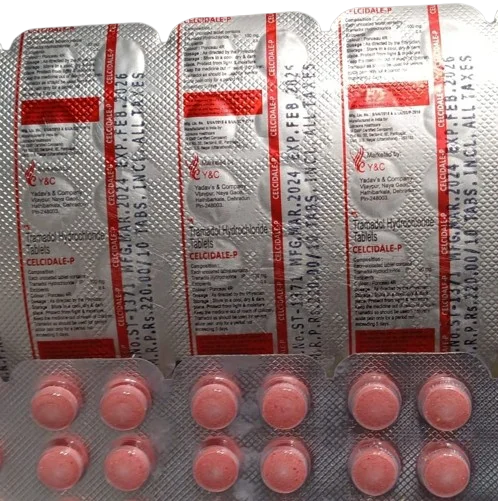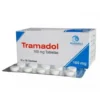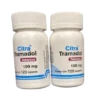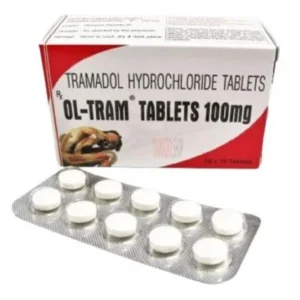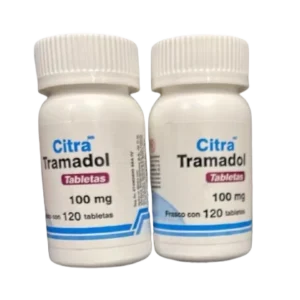Tramadol 100mg (Ultram): A Simple and Clear Guide
Tramadol 100mg, sold under the brand name Ultram, is a widely used medication to manage pain. It is an effective solution for those experiencing moderate to severe pain. In this guide, we’ll break down how Tramadol works, its uses, how to take it, possible side effects, and important safety tips—all in simple and easy-to-understand terms.
What is Tramadol 100mg?
Tramadol is a painkiller. It is part of a class of drugs called opioids, which work by altering how your brain and nervous system process pain. Tramadol 100mg tablets are prescribed to help people cope with pain from various conditions, including surgeries, injuries, or chronic pain issues like arthritis.
When you take Tramadol, it blocks pain signals and increases the levels of certain chemicals in your brain to make pain feel less intense. It’s a strong medication that should be used with care, following your doctor’s instructions.
How Does Tramadol 100mg Work?
Tramadol works by interacting with receptors in the brain and spinal cord. These receptors control pain signals. The medication prevents these pain signals from reaching the brain, thus reducing pain. Additionally, Tramadol affects chemicals called neurotransmitters, like serotonin and norepinephrine, which are involved in regulating mood and pain levels.
While Tramadol 100mg is effective, it should always be taken as prescribed. Your doctor will guide you on how to use it properly to avoid potential risks, such as addiction or side effects.
When to Use Tramadol 100mg
Tramadol 100mg is primarily used to treat pain, especially pain that is moderate to severe. Here are a few situations where it might be prescribed:
- After surgery
- For back pain
- For pain related to injuries
- For chronic pain from conditions like arthritis
It can be prescribed alone or alongside other medications for more effective pain relief. Always follow your doctor’s recommendations to ensure you get the right treatment.
How to Take Tramadol 100mg
Taking Tramadol is simple, but it’s crucial to follow your doctor’s directions to get the most benefit and avoid unnecessary risks. Here are key points on how to take it:
- Oral intake: Tramadol 100mg comes as a tablet that you swallow. You can take it with or without food.
- Do not chew or crush: Swallow the tablet whole. Crushing or chewing it can cause the medicine to release too quickly, which can be dangerous.
- Missed dose: If you forget to take a dose, take it as soon as you remember. If it’s nearly time for your next dose, skip the missed one. Never take two doses at once.
Dosage Information
Doctors usually start with a dose of 50mg to 100mg every 4 to 6 hours, depending on your pain level. Tramadol 100mg is a higher dose, often prescribed when lower doses are not sufficient.
The maximum recommended dose is 400mg per day. Taking more than this can increase the risk of side effects, so it’s important to stick to the prescribed amount.
If you experience side effects or if the medication doesn’t seem effective, contact your doctor for advice. They may adjust the dose for you.
Possible Side Effects
Like all medications, Tramadol can cause side effects. The most common ones include:
- Dizziness
- Drowsiness
- Nausea
- Constipation
- Headaches
These effects might get better as your body adjusts to the medication. However, if they continue or become severe, you should let your doctor know.
More serious side effects can happen, although they are rare. These include:
- Seizures
- Breathing problems
- Serious allergic reactions (such as swelling, rash, or trouble breathing)
If you notice any of these serious symptoms, seek immediate medical help.
Precautions Before Taking Tramadol 100mg
Before starting Tramadol, tell your doctor if you have any of these conditions:
- History of drug abuse or addiction
- Seizure disorders
- Breathing issues
- Liver or kidney disease
- Mental health issues, like depression
Tramadol can be dangerous if combined with alcohol, as both substances can cause drowsiness and breathing problems. It’s important not to drink alcohol while using this medication.
Some medications can interact with Tramadol, so make sure your doctor knows about all the drugs you are currently taking, including over-the-counter medicines, vitamins, and herbal supplements.
Risk of Addiction and Dependence
Tramadol is an opioid, and like all opioids, it has the potential to be addictive. It is essential to take the medication exactly as prescribed. People who use Tramadol for extended periods or in higher doses may develop a dependence on the drug.
If you feel you are becoming dependent on Tramadol or using it in a way that is not directed by your doctor, seek help immediately. Your doctor can guide you through alternatives or a tapering plan to stop using the medication safely.
Tramadol 100mg and Special Groups
Some groups of people need special attention when taking Tramadol:
- Elderly: Older adults may be more sensitive to the medication’s effects, so doctors might recommend a lower dose.
- Pregnant Women: Tramadol should only be used during pregnancy if absolutely necessary, as it can affect the unborn baby.
- Breastfeeding Mothers: Tramadol passes into breast milk and can harm the baby, so breastfeeding mothers are advised to avoid it unless necessary.
If you fall into any of these categories, make sure to inform your doctor so they can adjust your treatment plan.
What Happens if You Overdose on Tramadol?
An overdose on Tramadol is serious and can be life-threatening. Symptoms of an overdose include:
- Slow or difficult breathing
- Extreme drowsiness
- Seizures
- Loss of consciousness
If you think you have taken too much Tramadol, seek emergency medical help immediately.
Conclusion
Tramadol 100mg is an effective painkiller for moderate to severe pain. However, it must be used carefully and exactly as prescribed. While it helps many people manage pain, it also carries the risk of side effects

